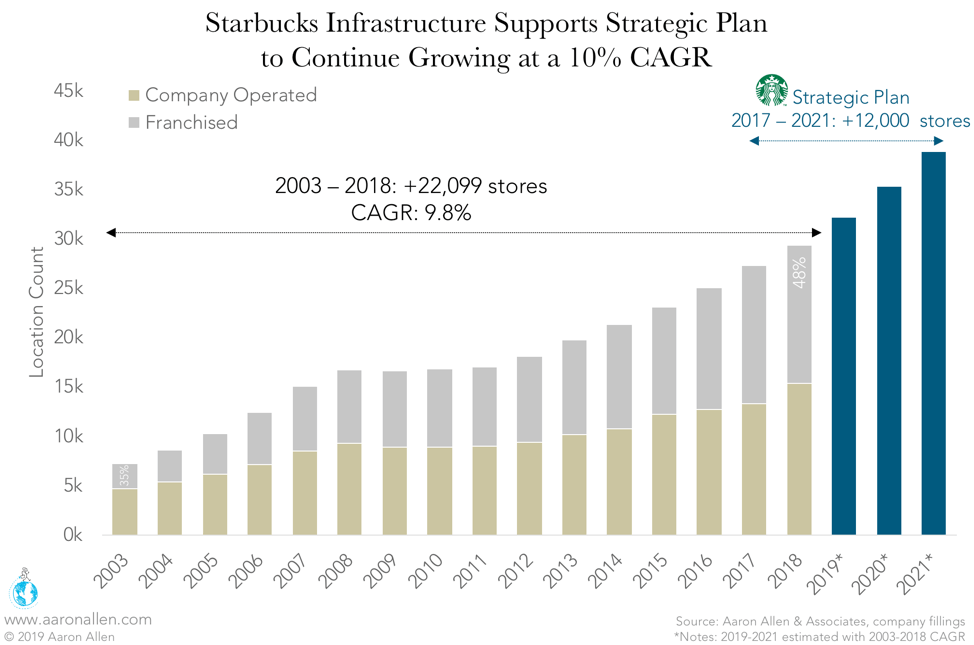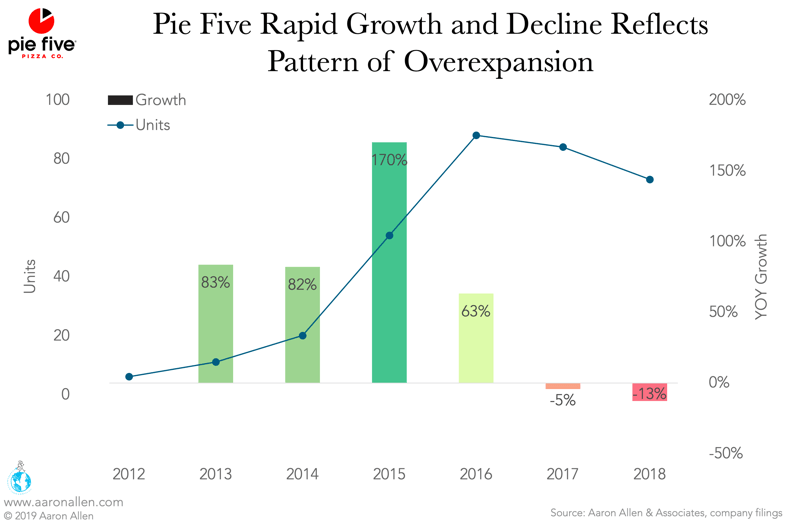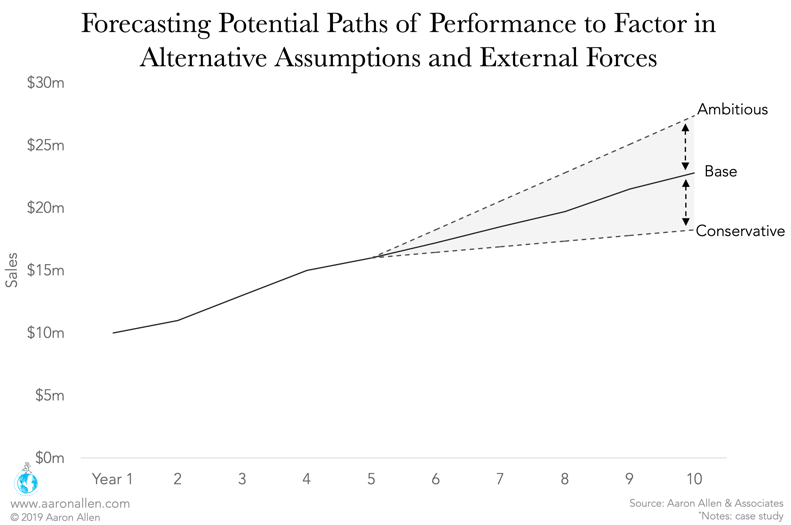While we often say it’s easier to ride a wild stallion (in this case a fast-growing restaurant chain) than drag a dead horse (one that’s not growing at all) — the big question that many restaurant chains need to answer is: how fast should we be growing? And what steps do we need to take to make sure we’re right-sizing our business along with that growth?
As a consultancy that’s top-line oriented and often supports companies with growth and expansion, we usually want to take a very optimistic view to help enable the most ambitious aspirations our clients may have. But, on occasion, a company comes along with plans that are completely ungrounded with reality. In those cases, we view it as our responsibility to help recalibrate expectations.
Many restaurant companies (especially startups and emerging brands) have more-than-aggressive expansion plans. We’ve seen some aim at opening 300+ restaurants in two- or three-year time-frames while having an existing footprint of just a handful of locations. It begs the question: is that feasible? Reasonable? Practical?
Right-Sizing for Expansion
For all of the positive case studies (the Chipotles of the world), there are plenty of others who had the same goals but fell short on executing them. Pinkberry, Blimpie’s, Dickie’s, Moe’s, Quizno’s. The list of brands that were expecting to take the industry by storm — but fizzled out — goes on.
Successful expansion requires more than strategic planning — it’s also the calculus of right-sizing to be able to support the business through its growth. Like a child who’s constantly outgrowing clothes so parents buy them a few sizes up to “grow into,” a rapidly expanding business is often at a point of either being under-supported with infrastructure or having systems (or people) too advanced for the current operations.
Advantages of Rapid Growth
Growth is one of the best indicators of positive performance. Some of the benefits of rapid expansion include:
- Gaining market share and making land grabs in new or emerging concepts and categories
- Excitement and enthusiasm from the media and additional publicity (leading to positive impact on valuations)
- Efficiencies and economies of scale
- Opportunities to engineer potentially redundant costs out from operations via hub-and-spoke or commissary models
- Attracting more team members, partners, suppliers, and investors who want to be involved or associated with the brand
Potential Risks of Growing Too Fast
Wild claims about growth have been made plenty of times, but because of dismissiveness or lack of operations-based projections, few are able to grow at rates above 35%. Some of the risks companies can face include:
- Challenges of right-sizing infrastructure (including people, process, technology, etc.), and outgrowing the capabilities of existing resources
- Supply chain pressures and ensuring availability and consistency of product
- Real estate pipelines and securing good locations
- Seeding new markets (creating exposure and awareness)
- Human resources hiring, onboarding, enculturation, and managing corporate culture
- Potentially overpaying to compensate speeding up slow parts of the system
- Tough comps leading to stalling or not achieving consistent growth, potentially damaging brand reputation
Aspiring is One Thing, Assuming to Better the Best is Another
Starbucks has become the second-largest foodservice brand in the world in terms of sales and is also one of the fastest-growing. At the end of 2016, the company announced a plan to open 12,000 new locations by 2021 — increasing store count by 48%. That growth amounts to about 2,400 locations per year. Or, even more impressively, an average of 6.5 stores each day.

Using that metric, it could be easy for smaller organizations to see growth targets of a few hundred locations as more than achievable. But Starbucks has put in more than 40 years of building infrastructure to support this level of growth (or even something remotely close to it). They’re starting from a rock-solid foundation, not a handful of units.
A Case Study: The Fast-Casual Pizza Segment
Fast-casual pizza broke onto the scene and grew rapidly. (In 2015, 9 of the top 25 fastest-growing restaurant chains were in this category.) There’s a large potential for it in the U.S. market — where the bulk of pizza sales are delivery and often at a lower quality — so there was plenty of capital available to fund expansion.

Many brands tried to grab the land very quickly, particularly with a franchise model. But then confidence started to wane, and a number of locations closed up as fast as they opened, with many concepts putting on the brakes. Pie Five, for instance, more than doubled between 2014–2015 but has closed 15 units (17% of its system) since 2016. This is one example of expansion happening too fast, and both individual units and the brand as a whole paying the price.
What to Consider When Planning for Rapid Expansion
For organizations that are growing quickly, it’s easy to outpace the infrastructure in place. This can include everything from finding locations, to building a pipeline of people, to supply chain constraints, to the demands of supporting franchisees. (International expansion adds even more layers of complexity.)
Often, growth targets are simply disconnected from the reality of what it takes to support a sustainable foodservice enterprise. Some fast-growing companies can require as much as a quarter per dollar in revenue growth in additional costs or capital requirements at a corporate level to ramp up in advance growth and pipelining. We recommend modeling conservative, base, and ambitious cases to compare scenarios and associated investments.

Organizations can work on financial models for months without factoring in the operational constraints that very well may mean the plans on paper border on impossible. We’ve heard these stories and reviewed pro forma hundreds of times and, sadly the case, very few companies actually make good on those projections.
Right-Sizing Growth Targets Increases Confidence While Reducing Risk
We caution our clients — both foodservice operators and investors — to beware of promising or planning for expansion targets that would be the equivalent of outpacing some of the fastest-growing concepts in half the time.
Making and breaking promises often leads to damaging the perception of a brand for consumers and investors alike. Right-sizing growth targets based on operational models brings additional sensitivity to planning and pays off through enhanced confidence in projections and performance.
For restaurants looking to expand, it’s not necessarily about how fast they can grow, rather how fast they should grow to deliver for all stakeholders involved.
How We Can Help
Aaron Allen & Associates works alongside senior executives of the world’s leading foodservice and hospitality companies and investors to help them solve their most complex challenges and achieve their most ambitious aims. If you’re a chain operator (or an investor in foodservice), we can help plan for and support growth. When the stakes are high, challenging assumptions helps dissipate the cloud of bias that can fog big decisions. We provide tailored insights about what’s now and what’s next — and why it matters — to help companies become faster, leaner, and more agile.

